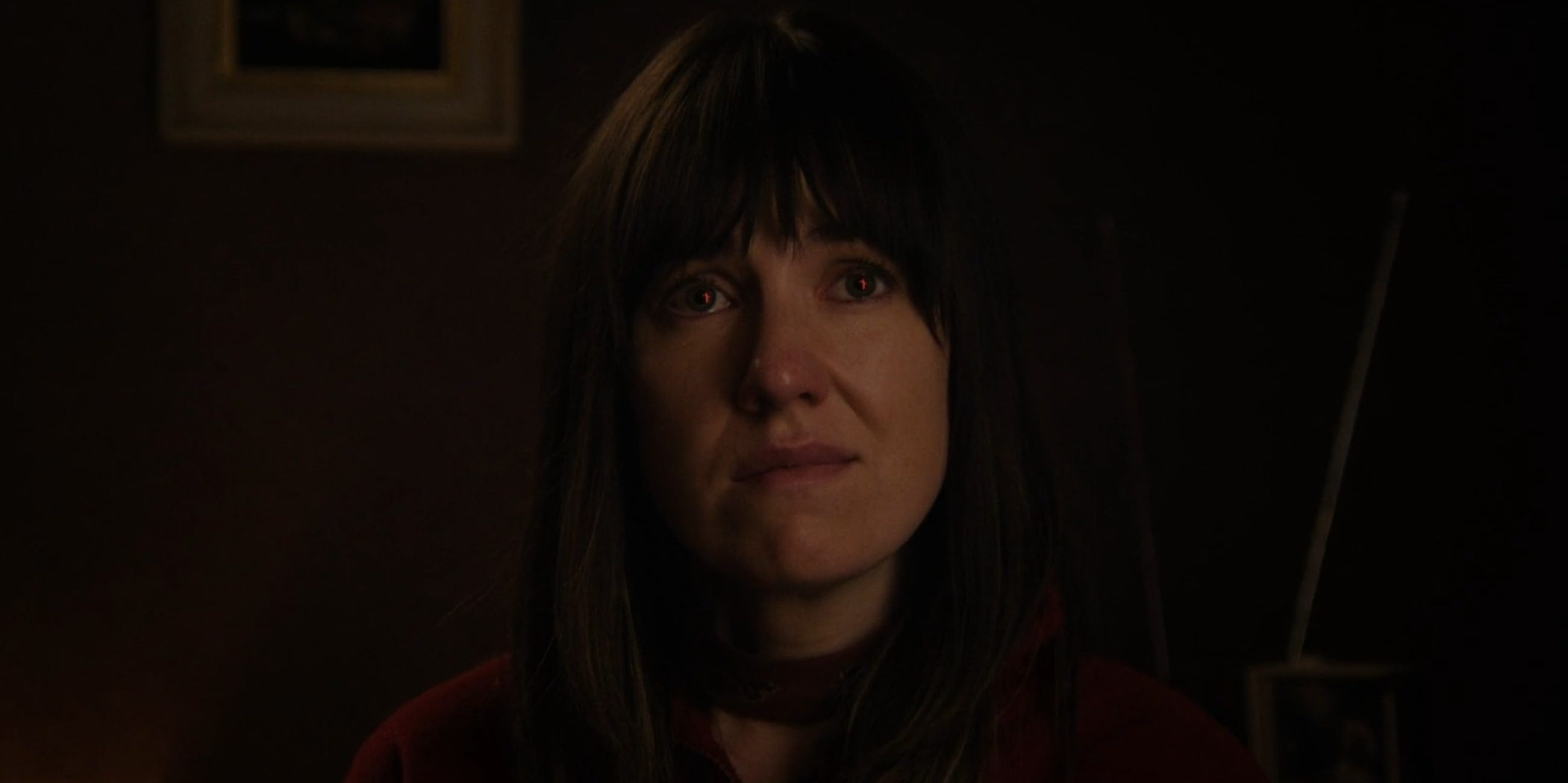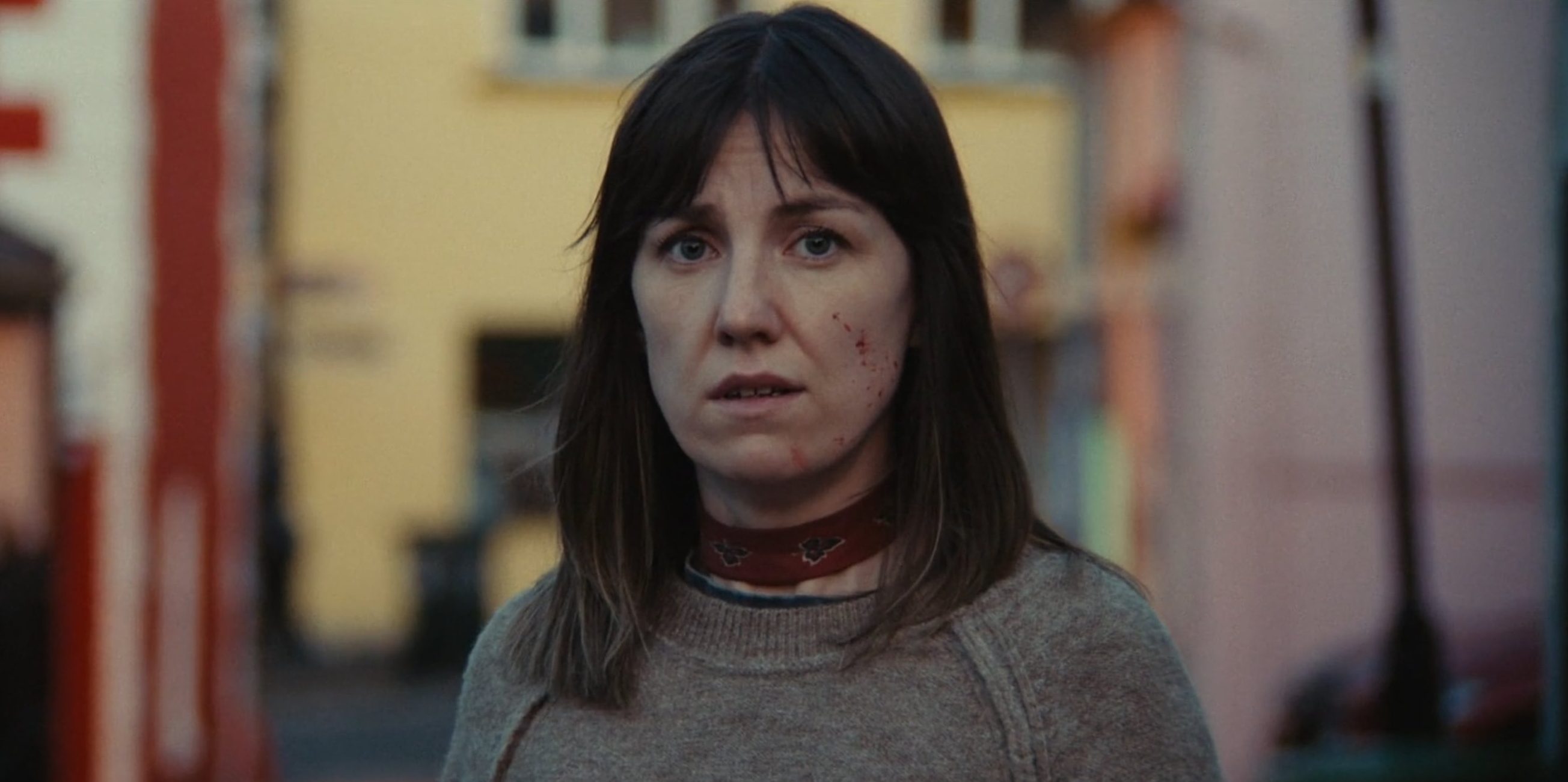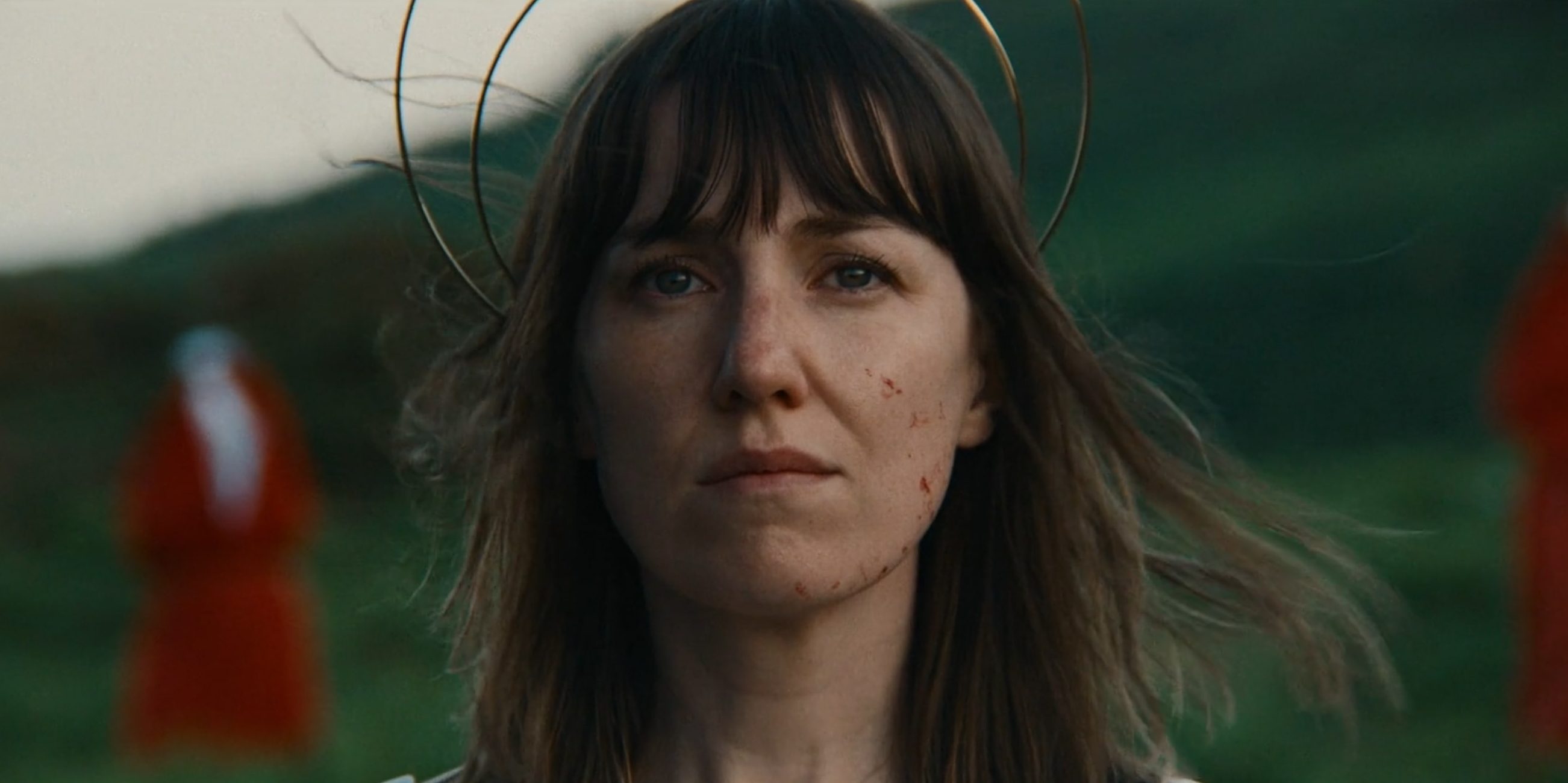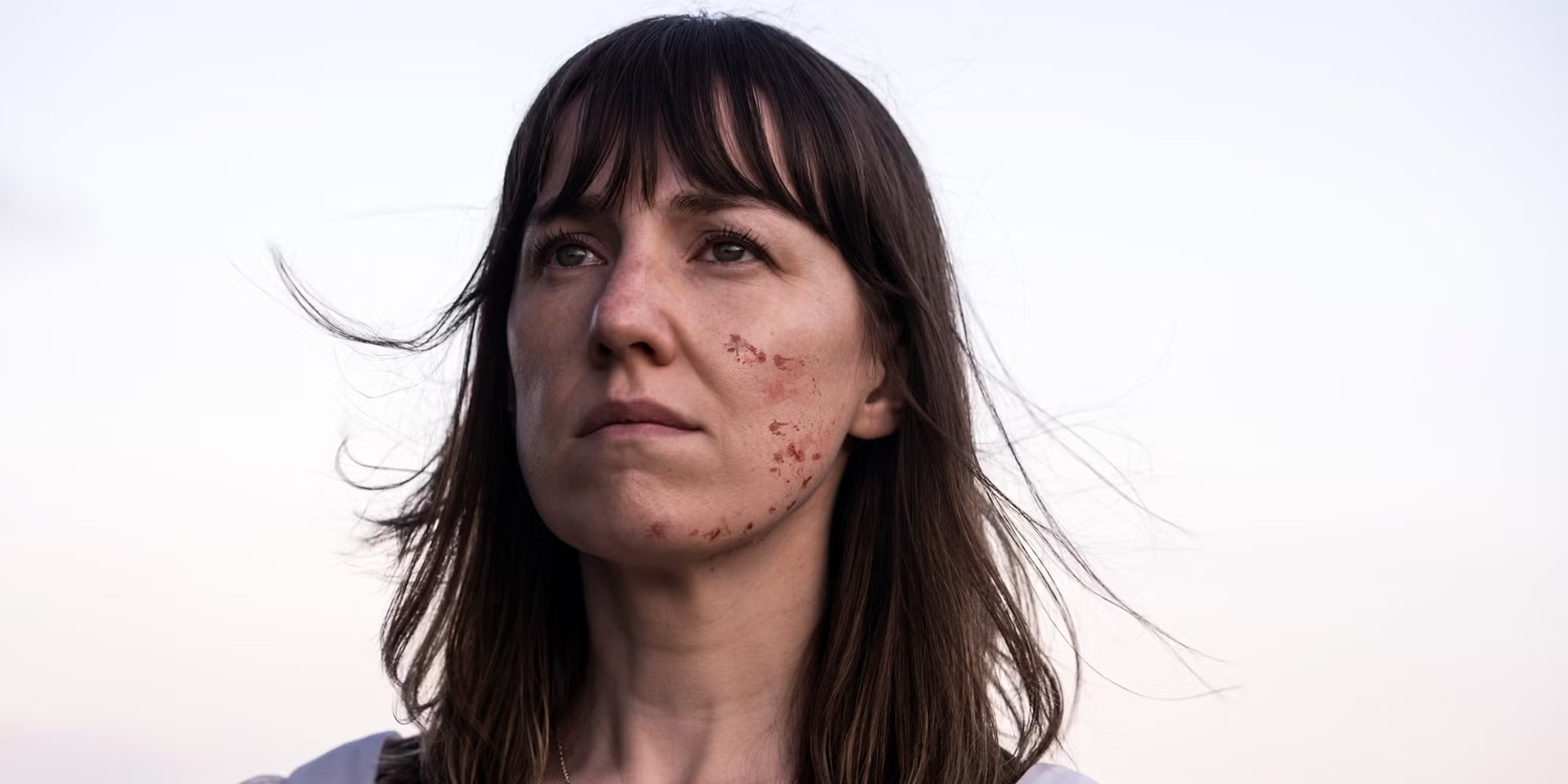By the end of ‘Fréwaka,’ Shoo and Peig’s story takes a drastic turn as they both realize how they are connected through intergenerational trauma and a history of abuse suffered by Irish women. Although initially hesitant about trusting Peig’s version of events, Shoo finds herself increasingly pulled into her way of thinking as her stay in the remote Irish village turns into a nightmare situation. The house’s dark secrets and her own past catch up with her, forcing her to confront some deeply uncomfortable truths in a new light. Meanwhile, the same is true for Peig, who also learns the true extent of her actions, including what happened to her years ago during her wedding night. As such, the movie’s ending leaves much to be discussed due to its ambiguous nature as it grapples with some profound themes at its heart. SPOILERS AHEAD.
Fréwaka Plot Synopsis
In 1973, a young, uneasy bride suddenly steps out of the wedding hall feeling ill. After vomiting outside, she sees a goat standing outside the house’s fence. Later, her husband is unable to find her as he realizes she has been abducted. Years later, another unknown woman dances and sings in her flowing gown inside her apartment. As she finishes her singing, she places a noose around her neck and hangs herself. As her body decomposes inside the room for weeks, it falls off the rope and attracts flies. Finally, rescue workers break in and discover her corpse. In the present-day timeline, Shoo enters her new apartment with her fiancée Mila. As they hunker down for the day, Shoo fixates on a glowing red Christian cross inside the apartment. The following day, she receives an assignment to look after an elderly woman who lives in an isolated part of the village.

While Mila rifles through their old belongings, Shoo heads off to take care of the elderly woman. On her trip, she realizes that the inhabitants of the village perceive her newest patient in a dismissive manner. Initially, the older woman does not allow Shoo to come into her house. However, they soon develop an understanding that the protagonist needs to be here for Peig’s day-to-day help and nursing needs. Before long, she learns that Peig has weird superstitions that she likes to adhere to, such as having seven items of a kind placed around doors and windows as a way to ward off interlopers. Additionally, there is a mysterious red door at the end of one of the house’s halls that leads to the basement. When asked about her peculiar methods, Peig explains that it is all an effort to keep “them” away.
Shoo is unsure about Peig’s state of mind, especially as she discovers bottles of medication thrown in the trash within a day of her visit. However, things start getting weird when she sees apparitions within the house that are deeply unsettling and signs of some supernatural presence. Eventually, the truth comes out that Shoo’s mother was the singing lady at the start of the movie who hung herself in her room. The woman was extremely abusive towards the protagonist, instilling a sense of fear and oppression through horrifying punishments. At the same time, we also learn that Peig was the woman who was abducted from her wedding in the movie’s opening. She explains that she was taken away by “them” and tortured beyond belief until her husband, Daithí, brought her back through a deal of some kind.
Fréwaka Ending: Is Shoo Dreaming or Is Everything Real?
One of the difficult but prescient questions that arises when watching ‘Fréwaka’ is whether we can trust Shoo’s account and her encounter with the supernatural apparitions as a genuine observational fact. As the movie delves into the tragic history of Irish women, it falls to reason that psychology and mental health are an important thematic anchor of the story. To that end, both Shoo and Peig’s belief in “them” could stem from the cycle of trauma and abuse they were brought up in from an early childhood. The townsfolk treat Peig slightly disparagingly, suggesting that they view her as some type of crazed woman living on the outskirts. Meanwhile, Shoo shows signs of disbelief in Peig’s visions of “them” at the start but falls into her thinking the longer she stays in the house.

Later in the story, Shoo heads over to the clinic to hand over Peig’s care to another person. However, when she consults her own notes, she notices that she has scribbled lines of incoherent messages relating to her own past. Eerily, she has no memory of ever writing these things down, suggesting that she may have done it unconsciously. It adds to the paranoia element in the movie as she dissociates more and more from the real world into a world of her own making. We also know from the start that Shoo is dependent on medication for her severe anxiety issues, which she picked up from her abusive childhood. Within days of her stay, Peig throws all the medicines in the house in the trash, convinced that Shoo must keep her wits about her. It also speaks to the elderly woman’s belief that “they” are trying to take over.
With no medicines to block her anxiety, Shoo could be losing her grip on everything around her, thereby leading to increasingly powerful visions of her mother’s apparition. As such, it is possible to view the story as the experiences of a severely traumatized individual trying to make sense of the world. However, it still does not explain some of the supernatural elements, such as the house’s link to “them” and the red door in the hallway. A better explanation could be that the movie combines the realities of trauma and how it manifests in real life with a supernatural horror rooted in Irish folklore and history. By blending the two things together, the effect is more profound and deeply unsettling as it touches upon real things and leaves the viewers in a twilight zone of being unsure what to believe in.
Who are “They”? Why Do “They” Want Shoo?
The second biggest question in ‘Fréwaka’ is the identity of the entities hunting down Shoo and Peig. The latter describes “them” as the people who live in “the house underneath the house.” They took her away on the night of her wedding, similar to how the Magdalene Laundries would pick up women in the past. We also see Peig vomiting during the wedding night, suggesting that she might be pregnant. Her pregnancy likely happened while she was still unmarried. To that end, “they” might have come for her because she broke the social conventions of her times, paralleling how asylums would “treat” women who were deemed to be breaking the rules of society. After Peig was taken away, she experienced torment in their world for a significant period.

When Shoo asks Peig about what the other world is like, the elderly woman says that it consists of “a madhouse, a famine village, a laundry house, a coffin ship, a field poisoned with blight, and a street full of blood and bullets.” She could only escape the place after Daithí, her husband, decided to give away their newborn baby as payment for Peig’s release. The trick worked, and she was able to return home, where she became increasingly reclusive. The torture and abuse she lived through during her time in “their” world made her guard herself against any more incursions of the kind. However, she did not know that the baby she and Daithí gave away was Shoo’s mother. Peig recognizes the woman as her child after Shoo confirms that her mother had a club foot, just like Peig’s baby daughter.
After learning the truth from Peig, Shoo realizes that “they” are after her. Because Peig escaped their clutches years ago, they want compensation for losing her, and Shoo is that replacement. Suddenly, the two inhabitants of the house realize that they are not just nurses and patients but grandmother and granddaughter. As a result, Peig decides to return to their world through the red door because she does not want her granddaughter to pay the price for her actions. While the transaction seems solid in theory, it proves to be futile because “they” no longer want Peig. Even though she enters the red door, she is soon thrown back out with severe injuries. Thus, the onus falls on Shoo to find a way to escape “them” without Peig sacrificing herself.
Why Does Shoo Enter the Red Door? Where Does it Take Her?
Realizing they are out of options, Peig and Shoo sequester themselves in the upstairs bedroom while “they” enter the house and start looking for the latter. The wait becomes excruciating as Shoo hears the voices of the townsfolk outside the room, which Peig tells her is their way to cajole her out of the room. She tries ignoring them for a long time until her visions of her mother return. Desperate to save the protagonist somehow, Peig impales herself with the doorknob, hoping that her death will stop “them” from coming for her granddaughter. However, even after her passing, Shoo hears her fiancée Mila’s voice outside the room asking her if she is alright. She thinks it is another one of their plots. When the voice goes away, she finds Mila’s engagement ring and her car outside, immediately deducing that her lover has been taken by “them.”

With no other options remaining, Shoo heads for the red door, knowing she must enter to bring back Mila. She finds a wedding dress floating in the hall, which she puts on before descending down the stairs. She emerges in a new world with open fields. Far away, a circle of robed individuals waits for her to enter their midst before they put a crown on her head. Atop the hill, Shoo notices a horned man watching her, although she is unable to make out his features distinctly. At last, “they” have managed to capture her in their clutches, and she can do nothing but watch with blood dripping from her eyes as she pays the price of generations of trauma. The film fades to black, leaving us in the dark about Mila’s fate and what happens to Shoo subsequently.
It is likely that because “they” are some sort of harbingers of social order going back many generations in the past, their reasons for abducting Mila could be related to the fact that she and Shoo are in a lesbian relationship. To that end, Mila may not be returned to the normal world but may be kept alongside the protagonist in “their” world. The ending showcases the pain of Shoo’s lineage and how, despite her best efforts to confront the trauma, she and all the women in her life ended up succumbing to the forces looking to prey on them. It mirrors the tragedy of Ireland’s past and how countless women were lost in the throngs of social institutionalization. In the movie, this resulted in Peig losing her baby forever and Shoo growing up with an abusive mother. Thus, the real horror was the arbitrary nature of their punishment, which became a cycle of torment.
Read More: Jewel Thief Ending Explained: Is Rajan Dead?


